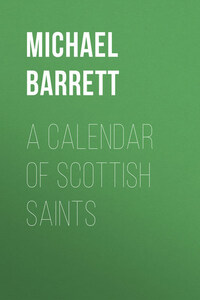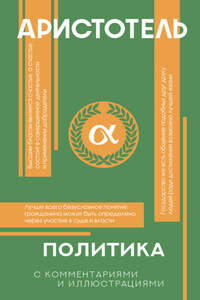The title of Scottish, applied to the holy ones whose names occur in these short notices, must be understood to refer not so much to their nationality as to the field in which, they laboured or the localities where traces of their cultus are to be found. The Calendar here submitted does not pretend to be exhaustive; the saints therein noted are those who appear prominently in such records as remain to us and in the place-names which still recall their personalities.
In this new edition much additional information has been inserted, and many emendations made to render the Calendar as complete as possible.
The chief sources relied upon in the compilation of the work are:
The Breviary of Aberdeen, drawn up by Bishop Wm. Elphinstone, and printed in 1509.
Dr. Forbes' Kalendars of Scottish Saints.
Origines Parochiales Scotiae.
Dr. Skene's Celtic Scotland.
Canon O'Hanlon's Lives of Irish Saints.
Cardinal Moran's Irish Saints in Great Britain.
New Statistical Account of Scotland.
The date at the head of each notice is generally that of the death of the saint concerned.
1 – St. Ernan, Abbot, A.D. 640.
The Saint whose feast is celebrated on this day was a disciple of the great St. Columba, and is said by Colgan, the renowned Irish scholar, to have been his nephew. What connection the saint had with Scotland is not clear. He may have laboured for a time there under St. Columba, but he became Abbot of Drumhome in Donegal. On the night St. Columba went to his reward, as we are told by that saint's biographer, St. Adamnan, Ernan was favoured with a vision in which the saint's death was revealed to him. St. Ernan died in his Irish monastery at an advanced age in the year 640. The church of Killernan, in Ross-shire, is named after him. Another dedication to this saint is thought by some to be Kilviceuen in Mull.
4 – St. Chroman or Ghronan, A.D. 641.
On account of the destruction of so many ecclesiastical records at the Reformation, many particulars regarding some of our Scottish saints have been irrevocably lost. This is the case with the holy man before us. All that we know of him may be told in a few words. He lived in the Cunningham district of Ayrshire, where he was revered during life and venerated after death for his great sanctity. On his deathbed we are told he kept continually repeating those words of the 83rd Psalm, "My soul longeth and fainteth for the courts of the Lord. My heart and my flesh have rejoiced in the Living God."
7 – St. Kentigerna, Recluse, A.D. 733.
Like so many holy souls whose lives drew down the grace of Heaven upon the land, St. Kentigerna was of Irish race. Her brother, St. Comgan, succeeded their father, a prince of Leinster, in the government of his territory. Meeting with violent opposition from the neighbouring princes, on account of his just and upright Christian rule, St. Comgan was obliged to fly the country, and together with his widowed sister, who had been married to an Irish prince, took refuge in Scotland. St. Comgan devoted himself to monastic life, and Kentigerna retired to an island in Loch Lomond to live as an anchoress. Here in her solitary cell, on the hilly, wooded isle which is now called in memory of her Innis na Caillich (the Nun's Island), she spent many years of the remainder of her life. The island became the seat of the old parish church of Buchanan, which was dedicated to her, and in the graveyard, which is still in use, are many tombs of the chiefs and illustrious men of the clan MacGregor. The church has been long in ruins. St. Kentigerna died in 733. Her feast is to be found in the Aberdeen Breviary.
11 – St. Suibhne (Sweeney), Abbot, A.D. 656.
This saint was an Abbot of Iona who died in the odour of sanctity when he had been Superior of that monastery for about three years.
14 – St. Kentigern or Mungo, Bishop, A.D. 603 or 612.
The ancient kingdom of Cumbria or Strathclyde extended from the Clyde to the Derwent in Cumberland. It had been evangelised by St. Ninian, but, in the course of two centuries, through constant warfare and strife, the Faith had almost disappeared when, in the middle of the sixth century, St. Kentigern was raised up to be its new apostle. The saint came of a royal race, and was born about A.D. 518. He was brought up from childhood by a holy hermit of Culross called Serf, who out of the love he bore the boy changed his name of Kentigern (signifying "lord and master") to that of Mungo (the well beloved). It is under the latter name that he is best known in Scotland. It should be noted, however, that the benefactor of the young Kentigern, though possibly bearing the same name, cannot be identified with the well-known St. Serf of Culross, who, according to modern historians, must have flourished in a later century. At the completion of his education Kentigern fixed his abode at Cathures, now known as Glasgow, and was joined by many disciples, who lived under his rule in a kind of monastic discipline. His holy life caused him to be raised – much against his will – to the episcopal state. He fixed upon Glasgow for his see, and ruled his flock with all the ardour and holiness of an apostle. Simple and mortified in life, he abstained entirely from wine and flesh, and often passed two days without food. He wore haircloth next his skin, slept on a stone, and often rose in the night to praise God. Throughout his life he preserved the purity of his baptismal innocence. His pastoral staff was of simple wood. He always wore his priestly stole, to be ready to perform the functions of his sacred office.








